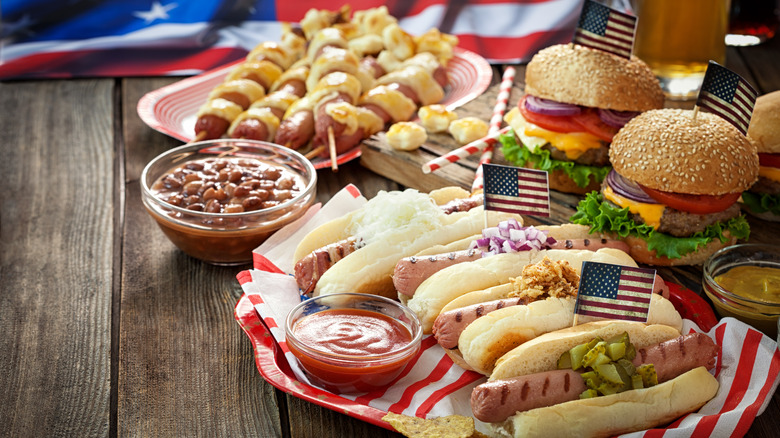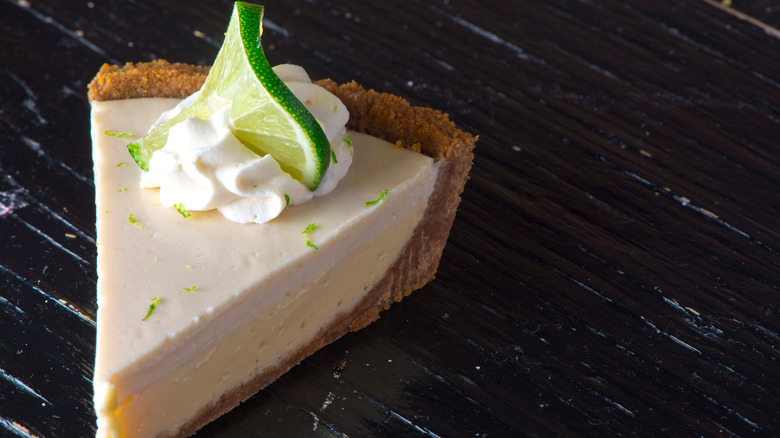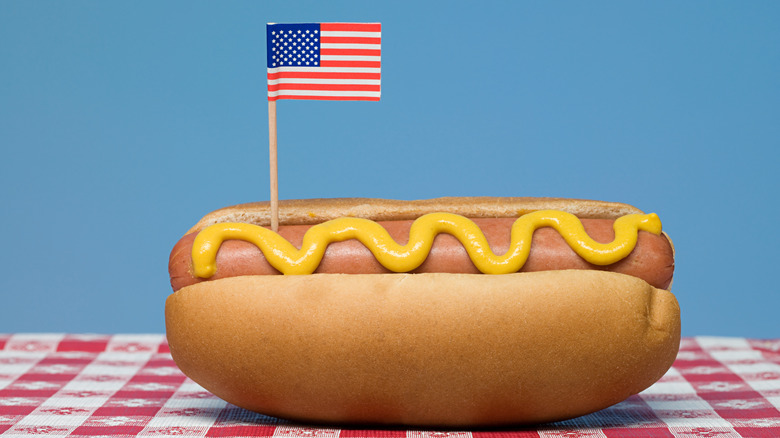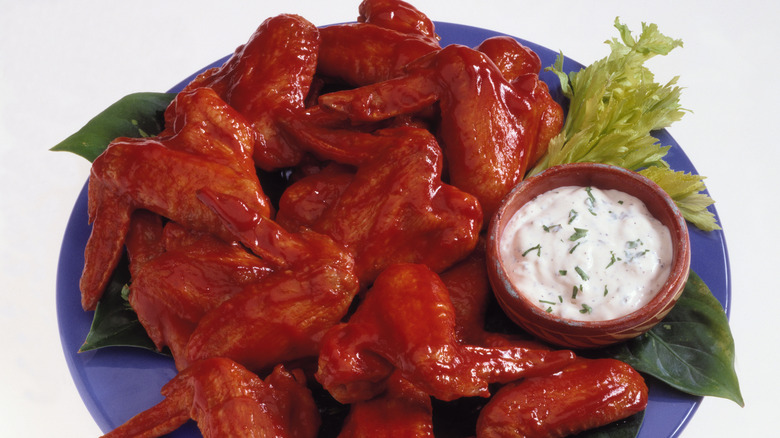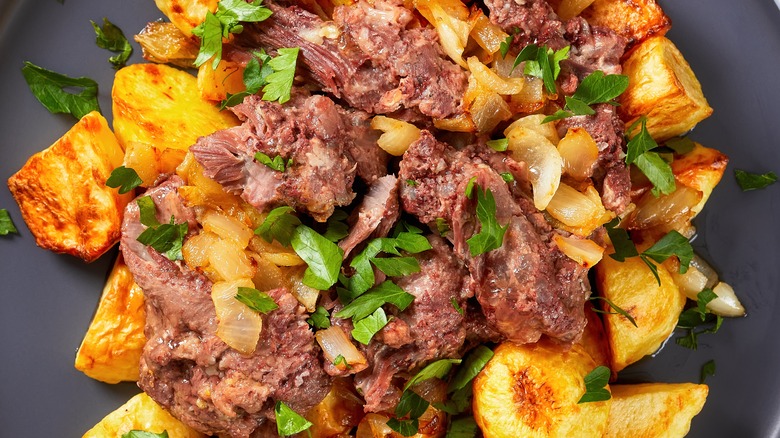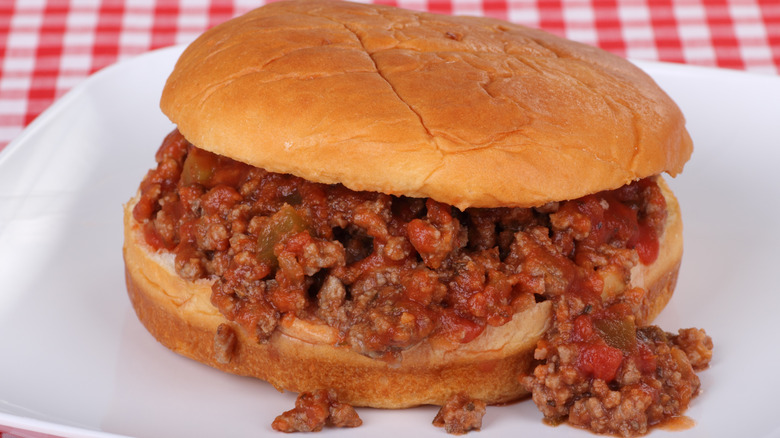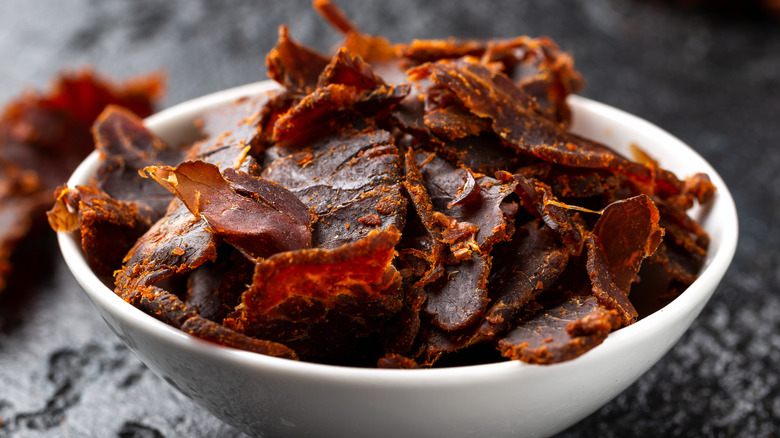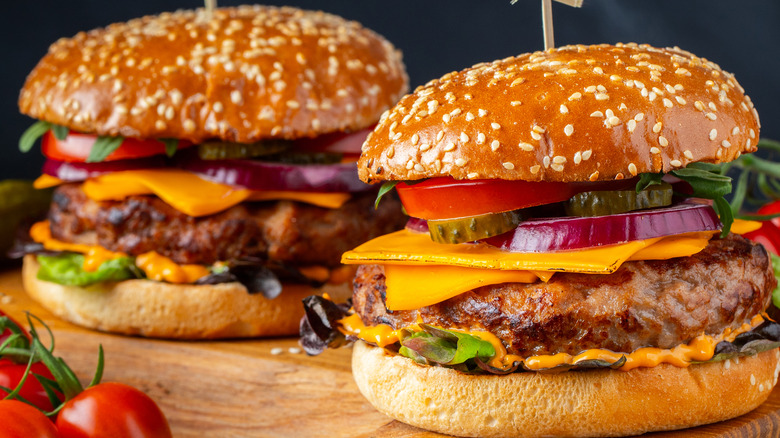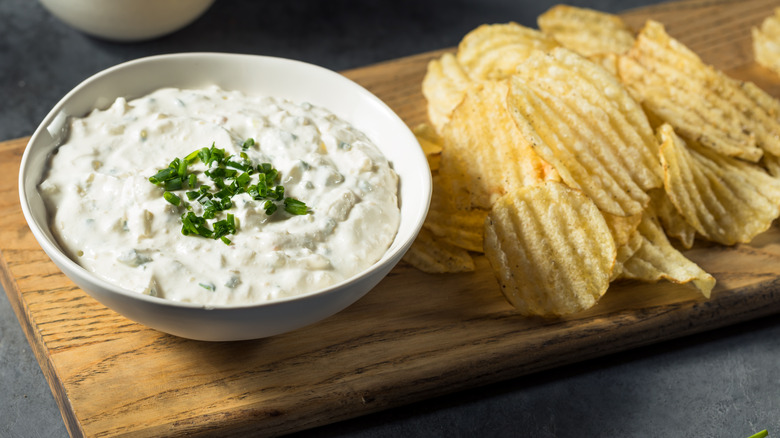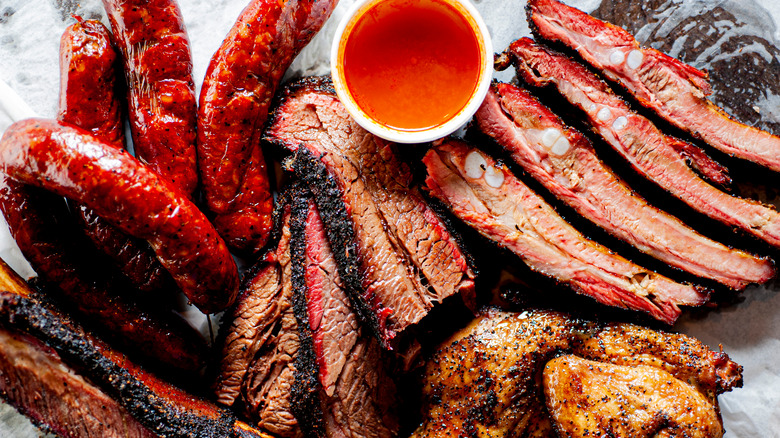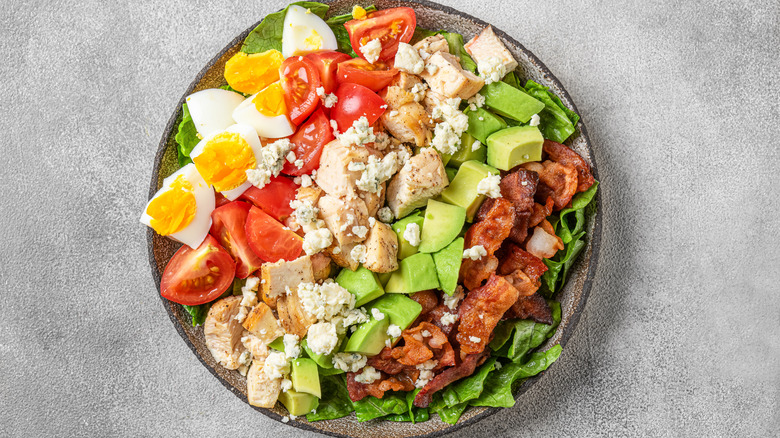12 Classic Foods That Revolutionized America
Society has always been connected on the most fundamental level by the attempts of human beings to meet their needs. We have so many that these attempts sometimes coalesce into a fully-formed culture that becomes the basis of our lives. In the midst of these many needs, though, none is more fundamental than the need for food.
Humans began meeting their nutritional needs with fruits, then hunting. As cooking came into the picture over 2 million years ago, according to National Geographic, each culture started to independently diversify its meals. Concurrently, technology evolved and transportation became more sophisticated, so each culture's meals traveled far beyond its borders.
Among these societies, America was special because this infusion of cultures and food wasn't just a part of American cuisine; it was the very basis of what we see today. So many immigrants crossed American borders and brought diverse cultures with them that the immigrant playwright Israel Zangwill declared America "the melting pot," as reported by The Washington Post.
With immigrating cultures came immigrating food. Many are buried in centuries-old recipe books, but others have stood the test of time. Over centuries, the most impactful foods have made a name for themselves and modified American culture. Despite their foreign roots, some of them are now considered all-American! Let's explore these classic foods that have revolutionized America.
1. Key lime pie
In the early 1900s, an unlikely combination of citrus, eggs, and milk created a masterpiece that has wowed America to date. This pie is named after key limes, a small citrus variant with a superb aroma. Key limes are originally Indo-Malayan, according to Lemon Citrus Tree, but through traveling, the Crusades, and other intercontinental historic events, they spread across North Africa, Europe, and into Florida.
While the original key limes are not commonly used anymore, the key lime pie is still a widely acclaimed symbol of Key West, Florida. Its origin has also been naturally attributed to the state, where the pie became most popular. However, that claim is now a fiercely contested subject. As CBS News notes, food writer and pastry chef Stella Parks reported research on the pie's origins in "BraveTart: Iconic American Desserts." Parks claims that the pie actually originated from Borden Dairy in New York City.
Despite the harsh debate on its origins, the key lime pie remains a major part of American cuisine, particularly in Key West. The government of Florida officially recognized this when it declared the key lime pie its state pie in 2006, as shown by the Justitia U.S. Law record of Florida bills. While food writer David Sloan claims that the recent debates are "trying to take away the Florida Keys' culture," according to Fox 13 News, the revolutionary effect of the key lime pie remains lasting.
2. Hot dogs
Whether it's a movie snack, a baseball game indulgence, or a proper meal, food hardly gets more American than the hot dog. According to Taste of History, ancient literature suggests that the sausages used in hot dogs were created as a way of preserving meaty leftovers with the innards of pig intestines. Soon, sausages became a Greek processed-food delicacy, then found their way to Europe. Sausages — most commonly eaten with bread — were especially popular in Germany and spread to the rest of the world.
America adapted to the German sausage and bread sandwich because of how convenient and inexpensive it was. However, the hot dog as it is known today was based on culinary innovation that took things one step further. There are many stories as to how exactly this innovation happened, but according to the National Hot Dog and Sausage Council, a popular theory is that the bun was created by a baker who was recruited by a hot dog vendor. The bun was meant to create a convenient means for customers to handle their hot dogs because hitherto –- believe it or not –- they had needed gloves to eat them.
True to its intercultural nature, America has owned the hot dog in spite of its German origins and the many debates on the specific details of its history. An NHDSC report shows that Americans spent nearly $8 billion dollars on hot dogs and sausages in 2021, based on supermarket data alone. Talk about revolutionary!
3. Buffalo wings
Buffaloes as animals aren't the most popular breed, so the Buffalo town decided to make up for the unpopularity by inventing chicken wings. Before the late 1900s, people weren't huge fans of chicken wings, per Insider Foods. The wings were pretty bony and had much less flesh than other parts like the thigh, so most cooks would throw them away. Those who wanted to toe the line of frugality, on the other hand, kept the wings to use as seasonings in chicken stock. One of these cooks was Teressa Bellissimo of Anchor Bar in Buffalo, New York.
The exact reason Teressa ended up with so many wings one night in 1964 isn't very clear. According to Time, different members of the Bellissimo family claim that Teressa either got a wrong delivery of wings or needed a midnight snack for her son. Whichever tale is true, what we know for sure is that out of necessity, she ended up trying something new with her chicken wings by deep-frying them.
Teressa also didn't stop with bland fried chicken. She decided to dip the chicken in some hot sauce, probably to boost its spice, and the modern Buffalo wings were born! The love for this dish spread like wildfire within and outside America. As more people have realized that they can enjoy crunchy deep-fried chicken wings as a meal, throwing wings away has become history in just a few decades since the creation of Buffalo wings.
4. Yankee pot roast
Amid a culture that generally prefers fast-moving activity and quick-cooking food, the Yankee pot roast is unconventional. This unconventionality could have made it unpopular among faster meat-based meals, but the pot roast is still standing strong, and we have New England to thank for that.
Unlike other classic American foods, the origin of the Yankee pot roast doesn't have a single person behind it. The meal was born from the need of an entire region to survive the infamous, bitterly cold New England winters. This meal was a perfect solution to many problems that came with the winter. First, nearly any kind of meat can be used to make pot roast, but fatty meat is especially great for it.
As though it couldn't get any more convenient, pot roast doesn't need fresh vegetables. The additives are all veggies that work great with root-cellar storage. The slow-cooking Yankee pot roast puts meat and fat through a delicate Maillard reaction that thoroughly changes its color and flavor, as explained by Science of Cooking. In the end, winter-weary New Englanders could use just their winter supplies to make a warm, hearty meal with a fresh taste.
Yankee pot roast has transcended being a regular winter meal to become an American delicacy. Pot roast changed how we cook meat, and with that amazing succulence, we can't help but be grateful for it.
5. Sloppy Joes
This loose meat-and-tomato-sauce sandwich has essentially become a synonym of the word "lunch" in the past decades, but its widespread influence has come at a price. The Sloppy Joe has deep roots across the country, all of which are nearly impossible to verify.
The most accurate explanation of Sloppy Joe's cultural impact would begin with the invention of the original loose-meat sandwich. More commonly known as the Maid-Rite sandwich, this loose-meat sandwich was first created in Iowa in 1926, according to the official Maid-Rite website.
Aside from birthing an entire franchise, the loose-meat sandwich also gave rise to its tomato-filled counterpart, the Sloppy Joe. The exact process of this transition from the Maid-Rite to Sloppy Joe is still a matter of fierce debate. A theory largely based on Maid-Rite is that an employee –- whose name was Joe, of course –- tried adding tomato sauce to his sandwiches.
However, the Sloppy Joe Bar and other sources hold the claim that the sandwich was a creation of Jose Garcia, a bar proprietor in faraway Cuba who also sold frozen seafood in his establishment. This theory claims that the seafood melted so notoriously that Garcia earned a nickname for his bar and meal. Later, he was reportedly convinced by Ernest Hemingway to import his signature meal into America. We may never find out which tale is accurate, but Sloppy Joe has made a large enough contribution to American food for it to make the revolutionary list whether or not we know its origin.
6. Beef jerky
It is often said that the best foods are discovered either by accident or by the need for survival. For beef jerky, the latter is true. In the 1500s, little advanced technology existed, meaning there was no refrigeration or easy food preservation. Considering that almost all transport was animal-powered and required a lot of time, people needed food that was resistant enough to remain unspoiled for long periods.
The first recorded procedure of drying fresh meat as a means of preservation was done by the Inca tribe of South America who may have recreated the millennia-old meat-drying practice of the ancient Egyptians (via Mountain America Jerky). These natives referred to the dried meat as "Cha'rki."
The Inca people cut the meat into thin strips to allow heat to penetrate it and pounded it to remove all non-meaty material. They then left it out for days to dry. If the dried meat was to be eaten on a long journey, they sometimes salted and smoked it to prepare it further.
The Spanish quickly adapted the cha'rki, now calling it "charqui," to their needs while migrating to North America. In English-speaking regions of America, the charqui was renamed "jerky." Now, flavored jerky is a healthy, protein-rich snack that's more American than its roots. Beef jerky did a great job keeping our forerunners alive, but it's no longer a means of survival.
7. Cheeseburgers
America loves cheese, and cheese has traveled 4,000 years (via Carnegie Museum of National History) to love America in return. That's why there are regular burgers, all of which are pretty great in their own right, then there's THE perfect cheeseburger. Nothing beats the taste of one large bite with melted dairy oozing into beefy goodness, the slight sharpness of tomato, the leafy tang of lettuce, and the underlying baked bun.
The hamburger, serving as the precursor to the cheeseburger, was created much earlier. Like many classic American dishes, it has a messy history stemming from multiple claims. However, according to the The Washington Post, all of these claims place the hamburger's invention in the late 1800s.
The cheeseburger, on the other hand, has a simpler history. Many of the existing claims revolve around a central theory, and all agree that it was an upgrade from the already existing hamburger. The superior theory is that Lionel Sternberger, a Pasadena, California, teenager working at his dad's burger stand in 1926, tried spicing things up by adding a slice of cheese to the burger, according to History of Fast Food. It was a simple idea that turned out to be a game-changer called the "cheese hamburger."
The term "cheeseburger" didn't come into play until 1934 when Charles Kaelin coined it and Louis Ballast trademarked it, per The Dairy Alliance. Both the meal and name have been instrumental in the cheeseburger's cultural impact, so we have these three men to thank for that revolution.
8. Corn dogs
Sausage is traditionally German, and there are many variations in regard to the specific details of its journey to America. In spite of its foreign source, it is undisputed that America has plenty of foods with sausage. According to the Index Box's meat market analysis (via Food Dive), the U.S. is not just a major consumer of sausage, but also the world's second-largest producer. What's all that sausage for? Corn dogs...and other things, but especially corn dogs.
The concept of a corn dog is quite simple. It's basically a hot dog or other types of sausage covered in cornbread and deep-fried. Its overall effect on a simple hot dog, though, is the genius part. The blend of savory cornbread with salty sausage creates an unbelievably perfect combination!
In the manner of all American culinary classics, the origin of the corn dog is wildly contested. However, according to Bar-S, the dissenting stories have some points of agreement –- that the Germans originally brought sausages to America, the original corn dog was created in the 1940s without a stick at its end, and the snack has been thoroughly modified over decades to create the modern version. This is why, even with a publicly available 1927 U.S. patent ascribing the invention of deep-fried, batter-coated foods to a Stanley Jenkins of Buffalo, New York, regions of the country still hold their corn dog claims close to their hearts and continue to battle it out.
9. Clam chowder
Next to cheese, America loves everything creamy. In all of its soupiness, clam chowder does not disappoint in that regard. Made with vegetables, seafood, and filler carbs like potatoes or crackers, clam chowder remains a year-long staple in many parts of the country. According to the All Big Frozen Food blog, regular chowder had been around for a fairly long time. However, clam chowder was a chowder-like concoction made by settlers who were trying to make the most of the seafood around them.
Despite the exactness of this theory, it's a challenge to pinpoint the specific tribe of settlers who may have started it. However, the most common convention is the theory shared by "Saving Gotham: a Food Lover's Guide to New York" –- that the clam chowder may have originated from French, British, or Nova Scotian settlers in New England before other indigenous and non-indigenous tribes adapted the dish later. For a healthy generalization, the entirety of the New England region is recognized as the birthplace of clam chowder.
10. Onion dips
When we think of dips, the next natural thought is about chips. Chips and dip are the hallowed tandem of American match-time snacks, but they were created nearly 100 years apart. According to the Smithsonian National Museum of American History, potato chips were created in 1853 by George Speck while the classic onion dip was created in 1954, per The New York Times.
This dip is so important because it changed how much Americans ate chips, and formed the basis for the invention of tons of variants of the classic dip. However, the story of the classic dip, which was also called California dip in the earlier days, can't be told without mentioning the Lipton company. According to Food52, Lipton introduced a dehydrated onion mix in 1952 that was intended for making soups. The inventor of the classic onion dip, who remains unknown to date, created a snack game-changer, and the word spread like wildfire. With the recipe spreading instead of a packaged onion dip, many people turned to Lipton onion soup mix for creating their dips.
In time, the company noticed the customer purchase trends and responded by outlining a simple, two-ingredient recipe for the dip on the packs of onion mix. Later, the company created entire advertising campaigns in print and electronic media for onion dips. As the onion mix got more popular and variants popped up, Lipton kept up with churning out recipes of the most popular variants, driving onion consumption even higher.
11. Texas barbecue
American cuisine has had a massive impact on food habits, but few have been as groundbreaking as the effect of barbecue culture on how meat is cooked and eaten. Barbecue isn't just a way of cooking meat; it's a deep-rooted culture of community and bonding. As such, one of the most central parts of building that community culture has been the Texas barbecue.
The special nature of the Texas barbecue stems from the concept of Texan butchers preparing the barbecued meat ahead of time. This preparation served two purposes –- customers could experience unique mixes of barbecued meat without setting up a barbecue, and unsold meat would last longer if it had been smoked (via Texas Monthly).
According to MasterClass, they also diversified the BBQ sauces, rubbing pastes, and wood for smoking different types of barbecue to create a distinct taste. All of these measures, as well as their choice to include both fresh meat, ground beef, and sausage in their mixes created an entirely unique niche for Texas barbecue.
12. Cobb salad
The Cobb salad is further proof of how genius can be birthed –- or cooked –- accidentally. According to the Institute for Culinary Education blog, the recipe was created by Bob Cobb on a hungry morning while entertaining friends at his Brown Derby Restaurant in Hollywood, California. Cobb needed a midnight snack, and his first option was to throw together random foods in the ice box to make a salad. On that morning, he cut up some cheese, bacon, lettuce, chicken, and tomato for his friends. Unknown to him, he had just created one of America's most iconic foods of all time.
An important cultural impact of the Cobb salad was that it brought together things that one would never consider combining to create an unlikely, but super delicious dish. Nothing could be more American than the adventurous, experimental spirit, and the Cobb salad changed our food by reawakening the need to experiment. Is there a better way to revolutionize America than changing the very core of our thinking?
